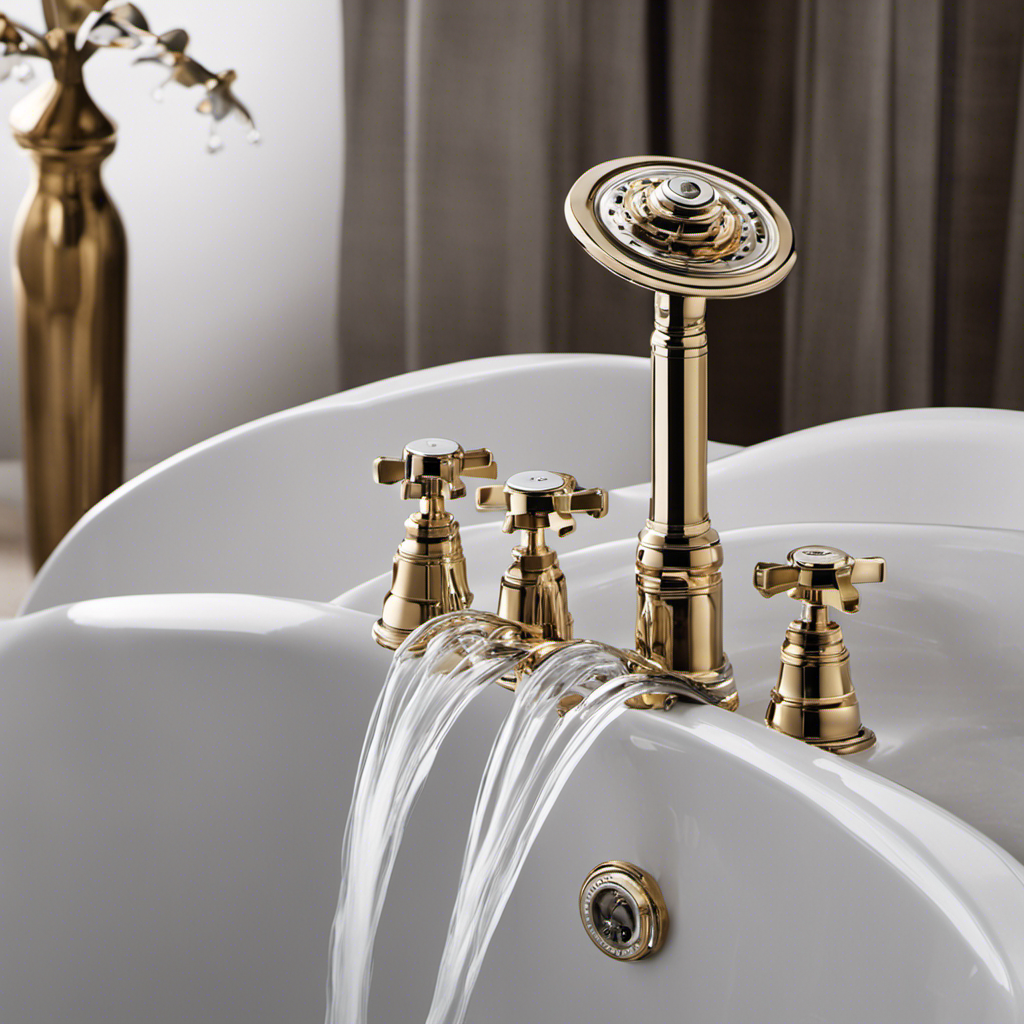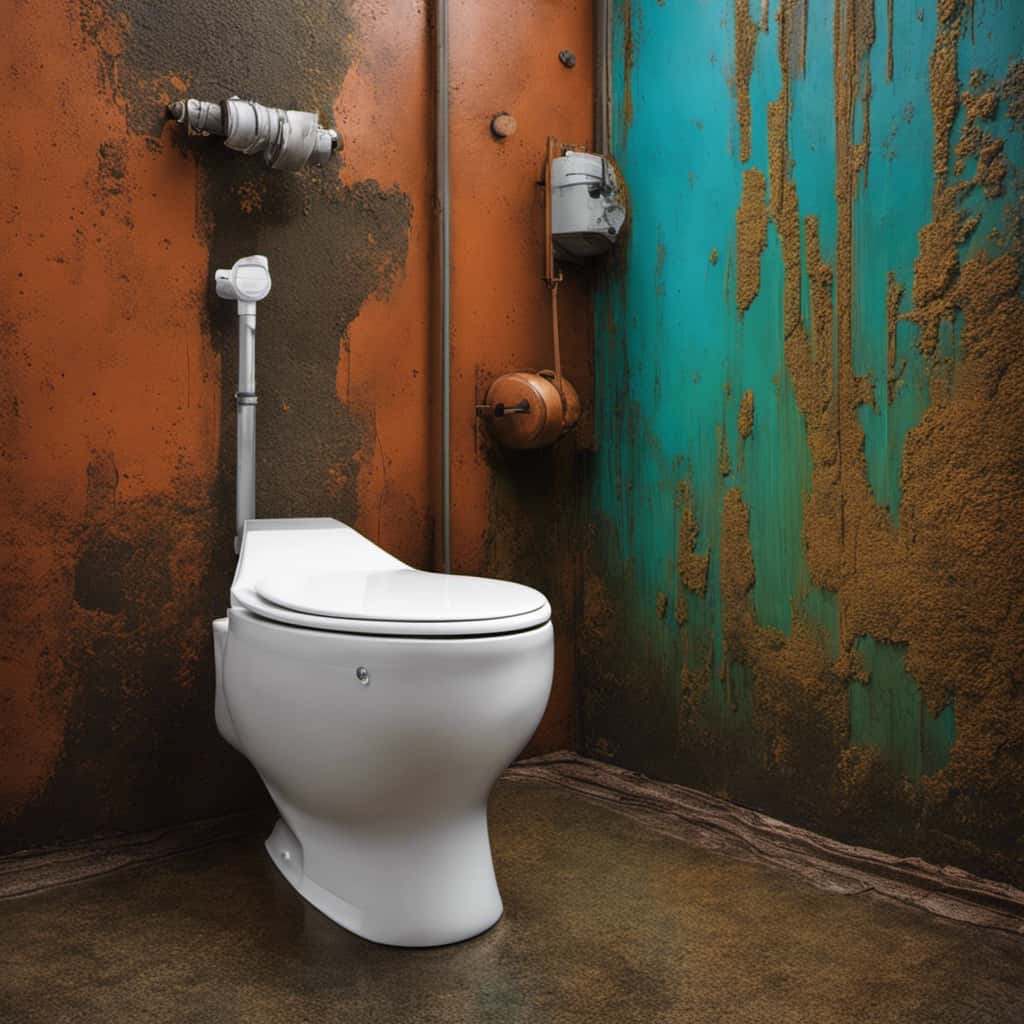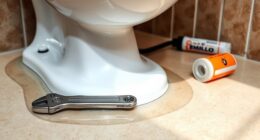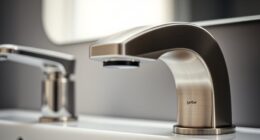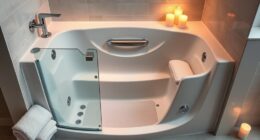As I stand beneath the steady stream of warm water, I marvel at the intricate workings of my bathtub faucet. It’s a remarkable feat of engineering, with its various components seamlessly collaborating to deliver the perfect blend of hot and cold water.
From the pressure valve to the spout, every part plays a vital role in ensuring a soothing and relaxing bathing experience.
In this article, we will delve into the inner workings of a bathtub faucet, exploring the different types, components, and the fascinating role water pressure plays in its operation.
Key Takeaways
- Different types of bathtub faucets, such as compression, cartridge, and ball faucets, offer unique mechanisms and benefits.
- The components of a bathtub faucet include the handle, spout, aerator, valve, and cartridge, which work together for smooth water flow.
- Water pressure plays a crucial role in faucet operation, affecting temperature control and flow rate.
- Regular maintenance, including cleaning and choosing a durable faucet, is important for optimal faucet performance and longevity.
Types of Bathtub Faucets
There are three main types of bathtub faucets: compression, cartridge, and ball. Each type has its own unique mechanism and benefits.
Compression faucets have separate hot and cold handles that require you to turn them clockwise and counterclockwise to control the water flow and temperature.
Cartridge faucets use a cartridge to regulate the water flow and temperature. They are easy to install and repair.
Ball faucets have a single handle that controls both the water flow and temperature. They use a rotating ball mechanism to regulate the water.
When it comes to bathtub faucet installation, it is important to choose the right type for your needs.
When it comes to finishes, different bathtub faucet finishes offer various benefits such as durability, resistance to corrosion, and easy maintenance. Some popular finishes include chrome, brushed nickel, and bronze.
Components of a Bathtub Faucet
One of the main components of a bathtub faucet is the handle that controls the water flow. The handle is usually located on the top or side of the faucet and can be turned clockwise or counterclockwise to adjust the water temperature and pressure.
In addition to the handle, a typical bathtub faucet consists of several other important parts, such as the spout, aerator, valve, and cartridge. These components work together to ensure smooth and efficient water flow.
When it comes to bathtub faucet installation, it is crucial to choose the right type of faucet finish that matches your bathroom decor. Some common faucet finishes include chrome, brushed nickel, and oil-rubbed bronze. Each finish has its own unique look and durability, so it’s important to consider both aesthetic and practical factors when making your selection.
Understanding the components of a bathtub faucet and the different faucet finishes available can greatly enhance your overall bathing experience.
In the subsequent section, we will explore the role of water pressure in faucet operation.
The Role of Water Pressure in Faucet Operation
Water pressure plays a crucial role in how well a faucet operates. Understanding the relationship between water pressure and faucet temperature control is essential for efficient and comfortable use. Here are three key points to consider:
-
Temperature Control: Adequate water pressure ensures that hot and cold water mix properly, allowing for precise temperature adjustment. Insufficient pressure can result in inconsistent water temperatures and make it challenging to achieve the desired level of comfort.
-
Durability of Components: High water pressure can put excessive strain on faucet components, leading to premature wear and tear. It is important to choose a faucet that can withstand the pressure in your plumbing system to ensure long-lasting performance.
-
Flow Rate: Water pressure directly affects the flow rate of the faucet. Insufficient pressure can result in a weak stream, while excessive pressure can cause splashing and wastage. Finding the right balance is crucial for a comfortable and efficient water flow.
Understanding the impact of water pressure on faucet operation is vital for maintaining optimal performance and durability.
How to Repair a Dripping Bathtub Faucet
To repair a dripping bathtub faucet, you can start by turning off the water supply. A dripping faucet can be caused by several factors, such as worn-out washers, damaged seals, or loose parts.
To fix a leaking bathtub faucet, follow these steps:
-
Gather the necessary tools: a wrench, pliers, and replacement parts like washers or seals.
-
Turn off the water supply by closing the shutoff valves located under the sink or near the bathtub.
-
Remove the faucet handle by unscrewing the retaining screw or removing the decorative cap and then the handle itself.
-
Inspect the washer or seal for damage and replace if necessary.
-
Reassemble the faucet by following the reverse order of disassembly.
-
Turn on the water supply and check for any leaks. If there are no leaks, your dripping bathtub faucet should now be repaired.
Tips for Maintaining Your Bathtub Faucet
If you want to keep your bathtub faucet in good condition, regular maintenance is essential. Here are some tips for maintaining your bathtub faucet:
-
Importance of regular cleaning for bathtub faucets:
- Cleaning your faucet regularly helps prevent the buildup of mineral deposits and grime.
- Regular cleaning ensures that the faucet operates smoothly and efficiently.
- It helps maintain the overall appearance of your bathroom.
-
Choosing the right bathtub faucet for your bathroom decor:
- Consider the style and design of your bathroom when selecting a faucet.
- Look for a faucet that complements the overall aesthetic of your bathroom.
- Ensure that the faucet is made of durable materials to withstand daily use and moisture.
Conclusion
In conclusion, understanding how a bathtub faucet works is crucial for maintaining its functionality and preventing issues like dripping.
By knowing the different types of faucets and their components, as well as the role of water pressure in their operation, you can troubleshoot and repair any problems that may arise.
Regular maintenance is also key to keeping your bathtub faucet in top condition.
So, why wait? Take charge of your faucet’s performance now and enjoy a relaxing bath without any worries.
